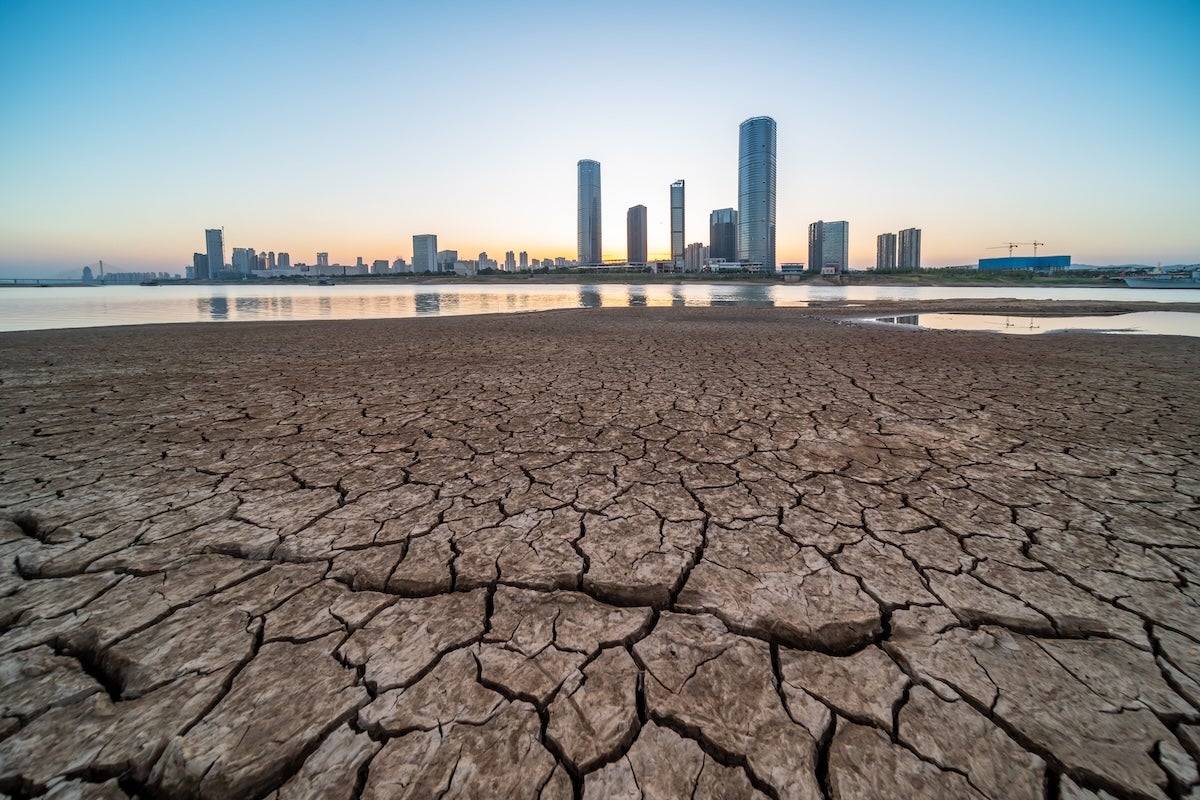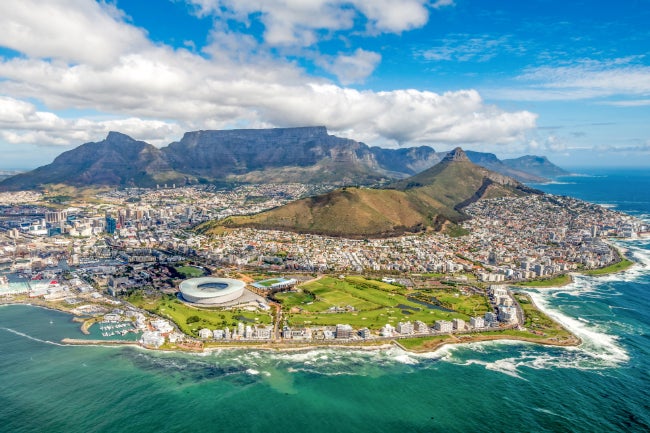
DAY ZERO: HUMANITY’S LOOMING WATER CRISIS
Around the world, “Day Zero'' is becoming a stark and concerning reality, illuminating the precarious state of our planet's water resources. Day Zero refers to the critical point at which a city's water supply is predicted to be nearly completely depleted, leaving taps dry and communities in crisis. World water shortage is not a distant possibility but a current reality facing major cities around the world propelled by climate change, population growth, and unsustainable water use.
As the threat of water scarcity in the world grows, the imperative for innovative solutions has never been more urgent. That’s why XPRIZE recently launched XPRIZE Water Scarcity, a $119 million, 5-year global competition, made possible by the Mohamed bin Zayed Water Initiative. The prize’s goal is to catalyze groundbreaking advancements in desalination technology to foster the development of reliable, sustainable, and affordable technologies to make the Earth’s vast oceans available for human consumption.
XPRIZE is spearheading efforts to avert water crises in the world and ensure a future where clean, ample water is accessible for all. To give you a better sense of this existential threat facing us all, here is what you need to know about Day Zero, the challenge of global water scarcity, and how we can all work together to meet this challenge.
WHAT IS DAY ZERO?
Day Zero epitomizes the challenges of the global water crisis and how it will affect individuals and populations around the world. This ominous milestone marks the day when a city can no longer supply water to its residents, at-home faucets stop running, and municipalities enforce water rations and restrictions in the hopes of at least maintaining subsistence, sanitation, and hygiene.
This scenario is not far off in the future, and it is not isolated to any single corner of the globe. The threat of Day Zero reflects a worldwide pattern of increasing stress on water resources, exacerbated by climate change. Over the last two decades, there has been a 134% increase in floods and a 29% increase in droughts around the globe. What is more, the consequences of these stresses and disasters disproportionately affect the most vulnerable populations, including women, youth, the elderly, and individuals with disabilities.
The unfolding crisis necessitates a multifaceted response. An integrated approach to water resource management, as well as technical and institutional strategies, are essential to dealing with scarcity and avoiding Day Zero.
CITIES AND COUNTRIES ON THE EDGE
Today, more than two billion people lack access to clean drinking water and another 2.7 billion face the reality of water scarcity for at least one month a year. A 2014 survey found that 25% of the world’s 500 largest cities were already facing water stress, and the issue is only growing as the UN estimates that global demand for fresh water will outstrip supply by 40% in 2030.
While cities like Cape Town and Mexico City are already in the midst of crises to avoid Day Zero, these ten cities around the world are most likely to next experience a Day Zero crisis: Bangalore, Beijing, Cairo, Istanbul, Jakarta, London, Miami, Moscow, São Paulo, and Tokyo.
This widespread prevalence of water stress calls for immediate global attention and collaborative efforts to mitigate the impending global water crisis.

CAPE TOWN AND MEXICO CITY
Recently, Cape Town, South Africa, and Mexico City, Mexico have found themselves in the throes of Day Zero crises.
Between 2015 and 2018, Cape Town experienced a severe drought, considered a one-in-400-year event, which pushed the city of approximately 4.6 million inhabitants to the edge of a water catastrophe.
The crisis was exacerbated by a combination of factors, including climate variability, population growth, and low rainfall which stressed water supplies behind nearby dams. As drought persisted, Cape Town's water reservoirs reached critically low levels, prompting the city to implement stringent water conservation measures.
The city's ordeal and its response have become a case study for other regions facing similar threats. The city's transparent and effective communication about the severity of the drought and the necessity of water-saving measures garnered public cooperation and was instrumental in averting Day Zero. Daily communication encouraged citizens and visitors to take shorter showers, flush toilets less frequently, and prohibited water for nonessential uses. The city also released usage maps to allow residents to compare their water use to their neighbors and steep tariffs to penalize those who are heavy users.
Cape Town was also able to accurately measure daily drinking water production and monitor dam levels in real-time to set daily water usage targets for residents, aiming to stretch the dwindling water reserves until the anticipated seasonal rains.
The city also tackled pressing infrastructure issues by lowering water pressure to reduce leaks and bursts while quadrupling the annual rate of water and sewer replacement to prevent water loss from faulty infrastructure.
More recently, in 2024, Day Zero threatened the more than 22 million residents of Mexico City.
The adverse effects of climate change, including decreased rainfall and subsequent groundwater depletion, combined with aging equipment and infrastructure issues that contributed to a 40% loss of water due to leaks in the supply system contributed to the water crisis.
Rapid urban expansion, and years of overuse, have stressed underground aquifers, while warmer temperatures and reduced precipitation across central Mexico reduced the chances of replenishing the aquifers and dams vital to the city's water supply.
Local authorities were forced to ration water to essential activities only, and supplement residential water supplies with once a week deliveries by truck. The city has undertaken other initiatives to manage supply including water harvesting, ecosystem rehabilitation, waste reduction, and rainwater collection and purification programs for lower-income and rural communities around Mexico City.
The city also undertook infrastructure work including "Water for All," a government program aimed at rehabilitating pipelines and hydraulic systems. But these efforts have been challenged by ongoing issues like insufficient rainfall and the absence of a concrete plan to avert the crisis.
ADDRESSING THE PROBLEM WITH DESALINATION TECHNOLOGY AND XPRIZE WATER SCARCITY
Innovative solutions, like novel desalination technology to create drinking water from sea water, play a crucial role in addressing the global water crisis. Desalination offers one such promising pathway to providing a reliable and sustainable source of water, independent of climate variability. XPRIZE Water Scarcity, made possible by the Mohamed bin Zayed Water Initiative, amplifies this potential by incentivizing the development of advanced desalination technologies that are environmentally friendly, affordable, energy-efficient, and accessible. This initiative exemplifies the critical role of innovation in transforming the global approach to water scarcity and securing a sustainable water future.
HELP US ADDRESS THE CHALLENGE OF DAY ZERO
The emergence of Day Zero as a critical concern underscores the urgent need for innovative solutions to the world's water crisis. XPRIZE Water Scarcity represents a beacon of hope in this challenge, driving forward the development of technologies that promise to make clean water accessible to communities around the globe. Through collective action and support for such transformative initiatives, we can turn the tide against water scarcity, ensuring a sustainable and secure water future for all.
To learn more about XPRIZE Water Scarcity, join or create a team, become a partner, and spread the message about this innovative work, visit http://xprize.org/water.